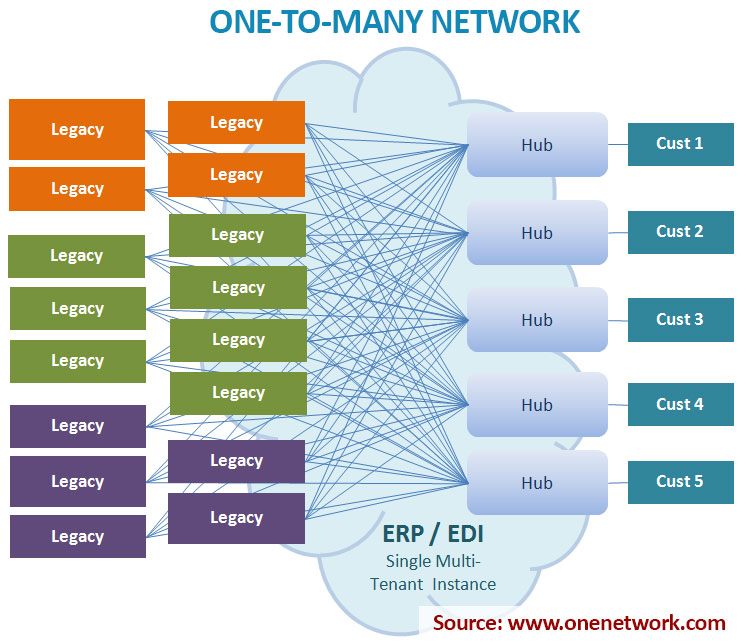This post has already been read 15660 times!
In part 1, we looked at the problem traditional technology faces in today’s globally, connected environment. This week we take a look at some of the solutions that have arisen in response to the challenge.
A number of solutions have evolved to meet these new challenges, but essentially they boil down to three different types.
Hosted Applications – Many vendors have moved their applications into the cloud. Though this is an improvement, it is limited, because fundamentally the application remains enterprise-centric, in terms of the underlying data model and transactions. They can deliver very limited value as they struggle to connect and coordinate external trading partners. Essentially, they’re old technology in a new location.
One-to-Many Networks – This model consists of one-to-many relationships, like a portal with many vendors (spokes) connecting to a single retailer (hub). In this model, each spoke is an independent entity whose “parent” is its hub. Thus a spoke cannot get a complete, cross-hub picture or functionality.
This is more like a collection of standalone software implementations, with point-to-point connections, than a true network. This means that real time data-sharing and collaboration across all parties, is a major challenge, if not impossible.
Many-to-Many or Multiparty Networks – In a many-to-many network every entity is a hub (or if it’s a spoke it can become a hub). This means that every entity can have a cross-partner picture.
With a many-to-many network architecture, an organization connects just once to the network and has the ability to transact, coordinate, and communicate with any other organization already on the network. This is similar to joining LinkedIn or Facebook. You only join once but millions of potential relationships are available to you.
That’s the value of a true network. Connect once, connect to all.
This architecture enables real time data sharing across all parties, with a “single version of the truth.” This eliminates virtually all information lead time and means all parties can have visibility into current conditions of their network, such as the status of orders, shipments, and inventory levels.
In the next article we will look at some other features that are needed to maximize the value of a network solution.
If you’re interested in this topic and the future of supply chain, I recommend you read the whitepaper, Supply Chain’s New World Order.
- Map of U.S. Trucking Spills in 2016 - January 13, 2017
- What is aPaaS? A Way to Supercharge Your App Development - December 12, 2016
- Future of Transportation: Goodyear’s Radical Smart Tire Concept - November 3, 2016


